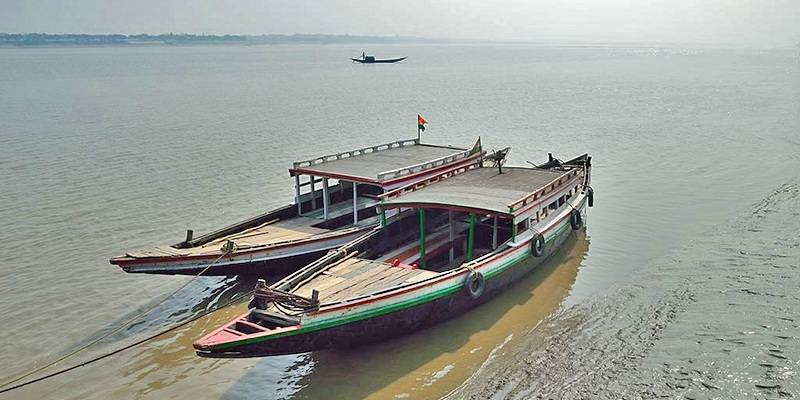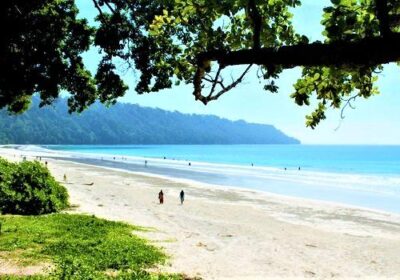Rasulpur River: A Serene Waterway in West Bengal
The Rasulpur River is a small but significant river flowing through the Purba Medinipur district of West Bengal, India. Originating from the Keleghai-Kapaleshwar Dam, this serene waterway meanders through lush green landscapes and fertile plains, contributing to the region’s agrarian economy and natural beauty. Though not as large or famous as some of the other rivers in West Bengal, the Rasulpur River holds a unique charm and serves as a lifeline for the local communities living along its banks.
Geographic Significance
- Source and Course: The Rasulpur River originates from the Keleghai-Kapaleshwar Dam area, situated in the Midnapore district of West Bengal. It flows eastwards through the fertile plains of Purba Medinipur, eventually merging with the Hooghly River near the town of Geonkhali. The river’s course, though short, is marked by several small villages and agricultural lands that benefit from its waters.
- Agricultural Importance: The Rasulpur River plays a crucial role in supporting agriculture in the region. The fertile plains along the riverbanks are ideal for growing various crops such as rice, wheat, and vegetables. The river’s waters are used for irrigation, helping to sustain the livelihoods of the local farmers. The alluvial soil deposited by the river also enhances soil fertility, making it suitable for diverse agricultural practices.
- Ecological Role: Apart from its agricultural significance, the Rasulpur River also supports the local ecosystem. The river’s waters are home to several species of freshwater fish and aquatic plants. The surrounding wetlands and riverbanks provide habitat for various birds and small mammals, making it a vital ecological corridor in the region.
Key Attractions and Activities
- Riverside Villages: The villages along the Rasulpur River offer a glimpse into rural life in West Bengal. These villages are characterized by their traditional lifestyle, mud houses, and vibrant community life. Visitors can experience the warmth and hospitality of the local people, learn about their customs, and partake in traditional Bengali meals. The villages are also known for their handicrafts, particularly pottery and weaving, which make for unique souvenirs.
- Fishing and Boating: The Rasulpur River is a popular spot for fishing among the locals. The calm waters of the river provide an excellent environment for fishing, with various species of freshwater fish like rohu, catfish, and carp found in abundance. Boating is another enjoyable activity on the Rasulpur River, offering visitors a chance to explore the river at a leisurely pace. The gentle flow of the river makes it safe for small boats and canoes.
- Bird Watching: The Rasulpur River and its surrounding wetlands attract a variety of bird species, making it an excellent spot for bird watching. Bird enthusiasts can spot several resident and migratory birds, including kingfishers, herons, egrets, and cormorants. The tranquil environment and the natural beauty of the river create a perfect setting for observing birds in their natural habitat.
Visiting Rasulpur River
- Location: The Rasulpur River flows through the Purba Medinipur district of West Bengal, approximately 100 kilometers southwest of Kolkata. It can be accessed via several points, including Tamluk, Contai, and Geonkhali, which are the major towns along its course.
- How to Reach: Visitors can reach the Rasulpur River by road or rail. The nearest railway stations are Tamluk and Contai, both well-connected to Kolkata. From these stations, local transport options such as buses, auto-rickshaws, and taxis are available to reach different points along the river. For those traveling by road, the river can be accessed via NH16 and the Haldia Highway from Kolkata.
- Best Time to Visit: The best time to visit the Rasulpur River is during the winter months, from October to February, when the weather is pleasant and ideal for outdoor activities. The monsoon season (June to September) also offers a unique experience, with the river flowing at its fullest and the surrounding landscape turning lush green. However, caution is advised during the monsoon as water levels can rise rapidly.
- Nearby Attractions: While visiting the Rasulpur River, travelers can also explore nearby attractions such as Geonkhali, known for its river confluence and scenic beauty, and Tamluk, which boasts the historic Tamluk Rajbari and Devi Bargabhima Temple. These sites offer a rich blend of natural beauty and cultural heritage, making the region a diverse travel destination.
Tips for Visitors
- Carry Essentials: When visiting the Rasulpur River, it is advisable to carry essentials such as drinking water, snacks, sunscreen, and insect repellent. There are limited facilities along the river, so being prepared ensures a comfortable trip.
- Respect Local Culture: Visitors are encouraged to respect the local culture and traditions while exploring the villages along the Rasulpur River. Engaging with locals respectfully and learning about their way of life enhances the travel experience.
- Conservation Awareness: The Rasulpur River is an essential natural resource for the local community and ecosystem. Visitors are urged to maintain cleanliness, avoid littering, and support local conservation efforts to preserve the river’s pristine environment.
Conclusion
The Rasulpur River, with its serene waters, fertile banks, and cultural significance, offers a unique glimpse into the rural life of West Bengal. It is a perfect destination for those looking to explore the region’s natural beauty, engage with local communities, and experience a peaceful retreat away from the hustle and bustle of city life. Whether it’s fishing on its calm waters, bird watching along its banks, or simply soaking in the scenic views, the Rasulpur River promises a refreshing and enriching travel experience.






Leave feedback about this